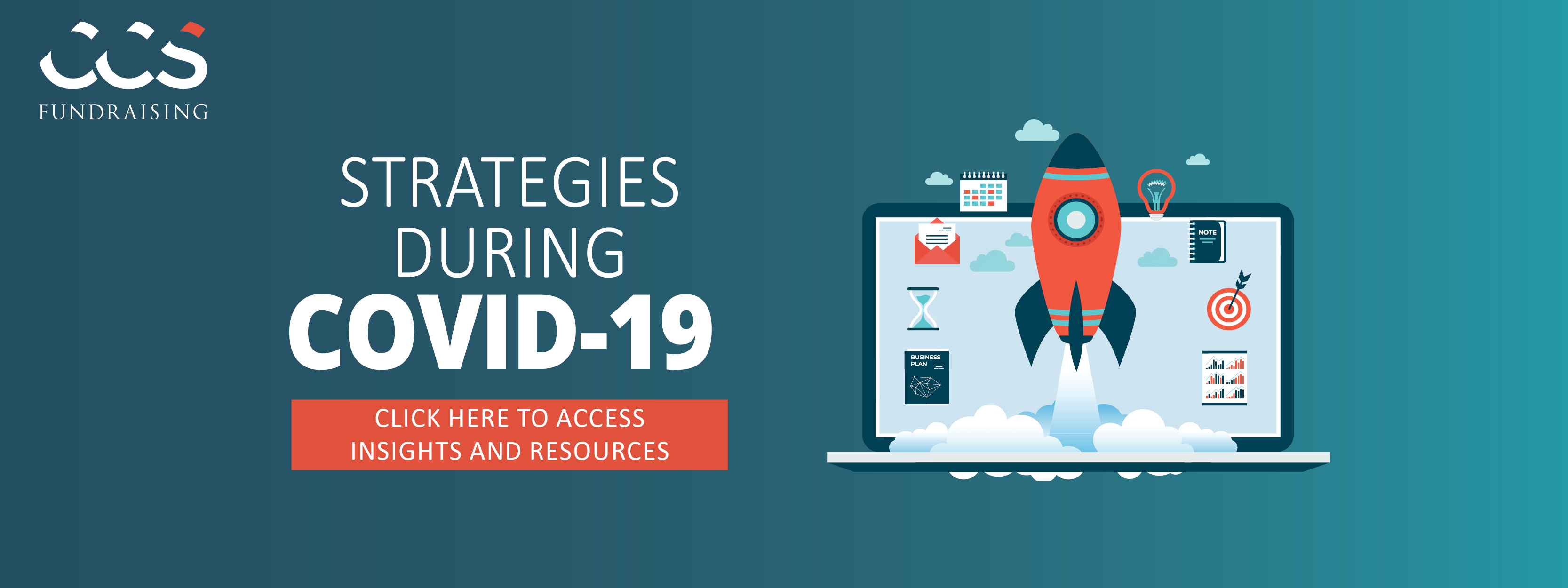As CCS Fundraising has previously noted, in the recovery that follows periods of crisis and economic uncertainty, organizations that pause fundraising activity lag significantly behind those that do not.
A pause in programmatic activity may therefore represent a risk to an organization’s donor engagement, cultivation, and stewardship efforts. During the current pandemic crisis, nonprofits must identify ways to move forward in serving their communities, driving impact, and engaging individuals – new and known – in their mission. This mandate presents a significant challenge for performing arts organizations, whose programs rely upon community gatherings and shared experience.
With the option of congregating in groups an impossibility for the immediate future, performing arts organizations are both uniquely burdened but also uniquely capable of reimagining their programmatic activities. The current public health emergency has led some performing arts organizations to take on the challenge of engaging and potentially expanding their audiences in noteworthy and exciting ways.
The Fisher Center at Bard moved quickly to launch a virtual stage, UPSTREAMING, in early April, offering a weekly series of streaming digital content, including archival performances as well as live broadcasts of new work. As part of the series, the creative team behind Caryl Churchill’s Mad Forest re-envisioned the previously scheduled live theatre production as a digital experience. In a matter of weeks, they pivoted the production to be performed live by actors from 14 separate locations using a specially modified version of Zoom. The digital broadcast performance had over 4,400 viewers, significantly more audience members than the live theatre space would have been able to accommodate.
New Jersey Symphony Orchestra launched NJSO At Home, complete with an entirely new logo to represent the organization’s current programmatic focus. NJSO At Home offers content including concert recordings, “couch concerts” by NJSO musicians, and an invitation to join a virtual orchestra to celebrate Beethoven’s 250th birthday.
Williamstown Theatre Festival pivoted to a digital strategy swiftly, announcing a collaboration with Audible at the same time they shared that they would be unable to proceed with the theatre season in Williamstown as planned. Individuals will be able to listen to the season’s works via podcast, the first time a season of theatre has been offered in this format. Notably, this new initiative enables potential audience expansion as global listeners, much of whom would typically be unable to make the trip to Massachusetts, now have access to the Festival’s summer lineup on their home devices.
These examples are but a selection of the many arts organizations creatively envisioning seasons, galas, and events large and small. If your organization has not yet adapted or is contemplating additional approaches, an assessment of internal resources and capabilities along with a quick survey of peer organizations can help you move forward quickly and effectively.
Creating smart, engaging digital programming empowers an organization’s development team. Online events can be leveraged for donor outreach and special invitations; successful events can yield new prospective donors and avenues of support. Consider the following key questions in guiding digital engagement follow up strategies:
- How can we collect data from our remote audience members? The ability to collect demographic and/or contact information from your digital audience will determine your follow-up strategies. Your ability to quantify the number of individuals who engaged with you and the depth and breadth of that engagement will also leave you well-positioned in making your case to donors and institutional funders moving forward.
- How will we cultivate and steward those who engage with us digitally? Once data collection is implemented, determine how your organization wants to steward participants. Consider the size of the event, the number of unknown participants, and the resources you want to allocate to screening and outreach for a human touch following a digital performance. If possible, build this plan before the program’s launch to ensure that your organization is maximizing the opportunity to make connections and build relationships in this remote setting.
- Which components of our new digital strategies will we carry over when operations have resumed as normal? While not complete replacements for concerts and theatrical productions to which audiences are eager to return (when safe to do so), innovative methods of outreach and engagement are still extremely valuable. Consider how your organization will carry over what it has learned during this forced remote period to continue to engage those who are unable to come to your space even during the best of times. Think about why individual and institutional partners might find digital strategy and expanded audience reach compelling, and ask for their insights and support as you move forward.
What has your performing arts organization done to expand and engage your audience during the COVID19 crisis? Comment below to share your strategies and success stories!
CCS Fundraising is a strategic fundraising consulting firm that partners with nonprofits for transformational change. Members of the CCS team are highly experienced and knowledgeable across sectors, disciplines, and regions. With offices throughout the United States and the world, our unique, customized approach provides each client with an embedded team member for the duration of the engagement. To access our full suite of perspectives, publications, and reports, visit our insights page. To learn more about CCS Fundraising’s suite of services, click here.
